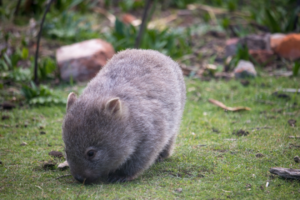Honouring Traditional Knowledge
The Macedon Ranges Autumn Festival is an annual celebration of seasonal wonder, food, drink, events, nature and the arts. Did you know, however, that the concept of autumn as one of four seasons comes from Western traditions, and the beautiful colour we admire comes from trees that have been introduced to the Australian landscape?
Around the world, many cultures, including Australia’s First Peoples, follow seasonal calendars that reflect the weather patterns and natural cycles of their own local flora and fauna.
The Macedon Ranges is located on the traditional lands of the Wurundjeri Woi Wurrung, Dja Dja Wurrung, and Taungurung Peoples, who have long observed and celebrated the unique natural cycles of their Country through their Seasonal Calendars.
The Kulin Nation Seasonal Calendar, shared among the five Kulin Nation groups (which includes the Wurundjeri Woi Wurrung, Dja Dja Wurrung and Taungurung Peoples), reflects the broader environmental patterns of the region while also allowing for distinct seasonal markers unique to different areas of Country. The Seasonal Calendar offers further insight into the natural cycles of local weather, flora and fauna highlighting the enduring relationship between First Peoples and Country.
As part of the Macedon Ranges Autumn Festival, we invite all visitors to honour and learn from the perspectives of the Wurundjeri Woi Wurrung, Dja Dja Wurrung and Taungurung Peoples. By engaging with their insights, we deepen our connection to Country.
Seven Seasons of the Kulin Nation with Wurundjeri Woi Wurrung
With permission from the Wurundjeri Woi Wurrung, we are pleased to share information on the Seven Seasons of the Kulin Nation, offering visitors an opportunity to reflect and gain a greater understanding.
Wurundjeri Country stretches from Western Victoria to Melbourne, encompassing parts of Kinglake and the Yarra River Valley through to the south and southeast of Macedon Ranges Shire, including the towns of Macedon, Gisborne, Lancefield, Romsey, and Riddells Creek.
The Wurundjeri calendar celebrates seven seasons, each marked by changes in the weather, the flowering of plants, and the behaviour of animals. These seasonal changes are tied to the life cycles of the environment, reflecting a holistic understanding of Country.
Each season brings specific opportunities for gathering food, conducting ceremonies, and living in harmony with the natural rhythms of Country.
Waring, Wombat Season (April–July)
With the arrival of Waring (wombat) Season, the Wurun (manna gum) flowering is ending, mornings are misty, and the nights grow longer. Wombats emerge from their burrows seeking sunshine, and migratory birds arrive from Tasmania. Male Buln Buln (lyrebird) begin displaying elaborate tail feathers and intricate songs to attract mates.
The hearts of Komba’derk (soft tree ferns) are ready for eating, providing a significant food source in the absence of fruit more readily available in warmer weather.
Waring Season is the longest of the Wurundjeri seasons, marked by rain, cool weather, long nights, and short days.
Guling, Orchid Season (August)
During Guling (orchid) Season, the bush awakens after Waring. Delicate native Guling bloom, and Mayan (silver wattle) burst into vibrant yellow. Gurrborra (koala) can be heard bellowing at night, and the environment is alive with activity. This season highlights the interconnectedness of the land, animals, and people.

Sanatorium Lake wild fungi (Mycena interrupta found on Geburrh (Mount Macedon) by Instagram @longinomus)
Poorneet, Tadpole Season (September–October)
Poorneet (tadpole) Season is a time of growth and renewal. Temperatures rise, but the rain continues. Poorneet appear in the waterways, and Buln Buln finish their displays. Murnung (yam daisy) tubers are ready for harvest, providing an important food source.
Kaan (snake) and Narrang (lizard) become active, and flowering plants like flax lilies, wattles, and kangaroo apples add color to the landscape. Migratory birds, like the Wurru-Wurru (sacred kingfisher), return, marking a celebratory time.
Buarth Gurru, Grass Flowering Season (November)
As the weather warms, kangaroo grass flowers, and rain nourishes the land. Balliyang (bat) catch insects in flight, and Common Brown Balam Balam (butterfly) are visible. Plants such as the Coranderrk (Victorian Christmas bush) begin to bloom.
Garrawang, Kangaroo-Apple Season (December)
The arrival of Garrawang (kangaroo-apple) Season brings unpredictable, stormy weather. Kangaroo-apple bushes and Ballee (cherry ballart) produce fruit, providing food sources. Gugaa (goanna) and Balliyang are active, and Bungil (wedge-tailed eagle) begin breeding. This season is a time of abundance and preparation for the hot months ahead.
Biderap, Dry Season (January–February)
During Biderap (dry) Season, the weather is hot and dry, with high temperatures and little rainfall. Tussock grass grows long and dry, and female Common Brown Balam Balam are active. The Southern Cross constellation dominates the southern sky at sunrise, signaling the height of summer.
View from Wil-im-ee Moor-ring (Mt William) photo provided by Wurundjeri Woi Wurrung Cultural Heritage Aboriginal Corporation
Iuk, Eel Season (March)
As the warm winds ease and temperatures cool, the days and nights become equal in length. Wurun flowers, signaling the start of Iuk (short-finned eel) Season. During this time, Iuk migrate from the rivers and creeks towards the sea for breeding. Iuk is an essential food source and holds significant cultural and spiritual importance



